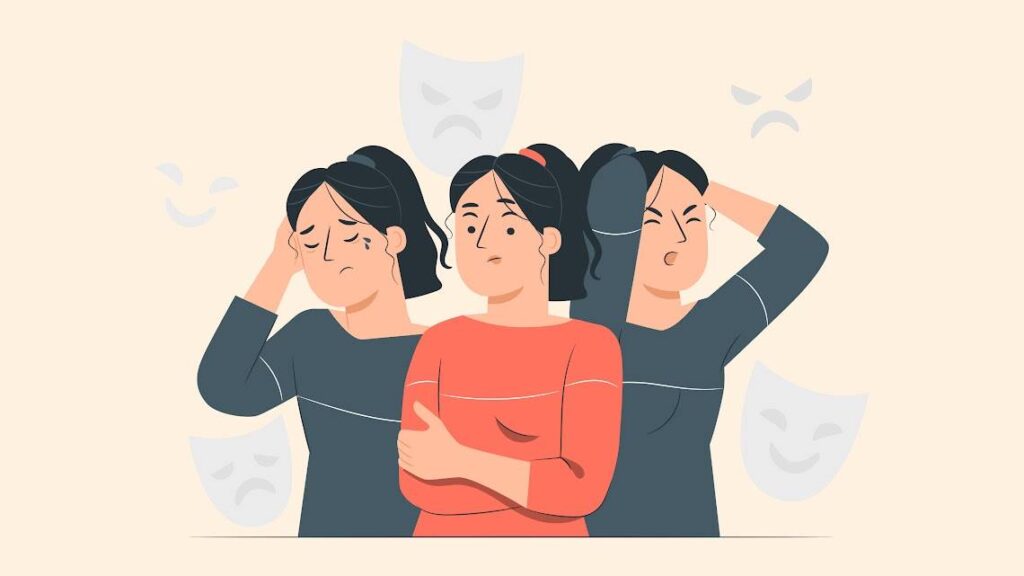
Bipolar disorders are a group of disorders associated with emotions, thoughts and energy levels. These disorders are characterized by oscillating episodes of mania or hypomania and depression. They are also expressed as recurrent changes in energy levels and behaviours. Cognitive symptoms such as changes in reaction time, executive functioning and visual or verbal memory are also present in these patients and contribute to disruption in daily life.
Mania is generally characterised by hyperactivity, heightened self-esteem, grandiose thinking, insomnia, elevated mood and behavior and sometimes, psychotic symptoms. During a manic episode, individuals usually engage in unconventional or impulsive behaviours such as excessive friendliness, crude jokes at inappropriate places, maxing out credit card limits, spending lavishly on friends, relatives, or acquaintances, dressing outlandishly or in a way that makes them stand out but is often improper, etc.
On the other hand, episodes of depression involve deep sadness, decreased energy levels, social withdrawal, lowered self-esteem, and in rare cases, symptoms of psychosis. Individuals feel worried or empty and lose the ability to enjoy anything. Getting out of bed may seem like a chore while concentration and decision-making are affected. Food habits undergo a change during these periods.
Hypomania is a less intense form of mania and in this state, individuals usually have their judgment intact. While they have bouts of creativity, energy and productivity, these are less intense and are free from the presence of psychotic symptoms.
Types
Based on the severity and duration of manic or hypomanic and depressive episodes, the Diagnostic and Statistical Manual of Mental Disorders, Fifth Edition (DSM-5) classifies bipolar disorders as:
Bipolar I Disorder
Bipolar I disorder is characterised by the presence of full-blown manic episodes, regardless of whether depressive episodes occur. These episodes are often intense and can significantly impair social and occupational functioning. In cases of severe symptoms, hospitalization may also be required for certain individuals.
Bipolar II Disorder
Bipolar II disorder requires the presence of at least one hypomanic and one depressive episode. For individuals with this disorder, periods of depression are often prolonged and accompanied by brief hypomanic episodes.
Cyclothymia
Cyclothymia is a form of mood disorder wherein the presence of hypomanic and depressive symptoms (not episodes) for about 2 or more years is a key requirement for diagnosis. There is a chronic fluctuation between these symptoms and individuals with this disorder usually develop bipolar II disorder in the long run.

Causes
Bipolar disorders arise from a combination of genetics, environmental and psychological factors. Genetics play a major role in the development of these disorders and a strong family history is one of the most significant risk factors. Apart from these, perinatal factors such as c-section delivery, smoking during pregnancy, maternal influenza can contribute to the later development of bipolar disorders. Traumatic childhood events and drug misuse during adolescence may lead to an early onset and a more lethargic course of the disorder. Individuals who struggle to manage their emotions, conflicts or problem-solve may be more vulnerable to recurring episodes or even hospitalization. Ironically, even positive events (such as achieving personal or professional goals) can lead to manic episodes. Thus, an individual’s highs, lows as well as coping skills can be critical in the development and course of these disorders.
Treatment
For all the three phases of bipolar disorders i.e. mania, depression and prevention, pharmacological therapy has proven to be very effective. These involve mood stabilizers and certain antidepressants that have shown promise. Along with these, lifestyle changes such as structured routines, regular sleep patterns, and stress management are also crucial in reducing mood swings and improving overall quality of life.
In addition to medication, various psychotherapeutic approaches have yielded positive results. One such therapy is Ellen Frank’s Interpersonal Social Rhythm Therapy (IPSRT). This therapy involves combining the management of bipolar symptoms with strategies that help regulate daily routines and sleep patterns. Maintaining consistent schedules and addressing interpersonal issues can help in reducing the severity and frequency of mood episodes.
A high level of hostility or criticism in families can increase the chances of relapse in bipolar patients. To address this issue and create a more supportive environment, family-focused therapy is a valuable approach and it involves both parents and patients, offers psychoeducation about the disorder and teaches problem-solving and communication skills.
Finally, cognitive behavioral therapy (CBT) has also shown promise. This therapy addresses the negative thinking patterns that contribute to mood swings and challenges and reshapes these dysfunctional beliefs. This helps in reducing future risk of mood episodes.
Bipolar disorders can bring intense emotional and practical challenges, but with the right combination of treatments many individuals are able to find lasting stability and enjoy a better quality of life. Gaining a deeper understanding of the condition, along with committing to individualized care, can empower people to navigate mood shifts more effectively and lead more meaningful lives.
Photo Credits:
First image: freepik
Second image: freepik
Citations
Geddes, J. R., & Miklowitz, D. J. (2013). Treatment of bipolar disorder. The Lancet, 381(9878), 1672-1682.
Leahy, R. L. (2007). Bipolar disorder: Causes, contexts, and treatments. Journal of clinical psychology, 63(5), 417-424.
Vieta, E., Berk, M., Schulze, T. G., Carvalho, A. F., Suppes, T., Calabrese, J. R., … & Grande, I. (2018). Bipolar disorders. Nature reviews. Disease primers, 4, 18008.

Sakshi
About the author
Sakshi is a clinical psychologist with a deep passion for understanding human behavior, a strong drive for research, and a keen eye for psychological intricacies. Committed to continuous learning, she seeks to explore every facet of psychology, from theory to practice, to better support and empower individuals. With a curiosity that fuels her pursuit of knowledge, she strives to bridge the gap between research and real-world applications, making psychology more accessible and impactful.
Recently Added
Adaptogens are a class of natural herbs, roots, and mushrooms that assist the body in adapting to stressors in the environment. These …
The journey of raising children comes with countless moments where they need our support and guidance. Whether our children are typically developing …
The World Infant, Child and Adolescent Mental Health Day was first initiated to highlight the importance of mental health, starting from the …




